
Habitat celebrates 21st build


Owens Corning partners with Habitat to house families
Story by Stephen Zenner | Photos by Lori King
TOLEDO – Clutching a house key and a Bible, Carla Savage took a moment to thank her family and supporters for helping her become the proud owner of a single-story house she helped build on Piddock Rd. in Toledo.
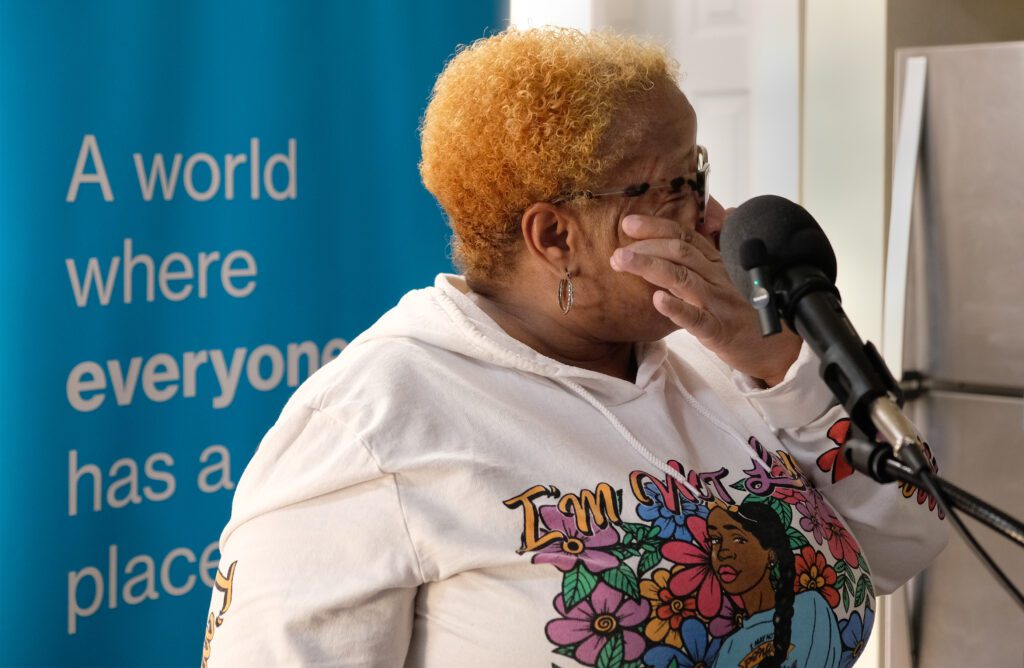

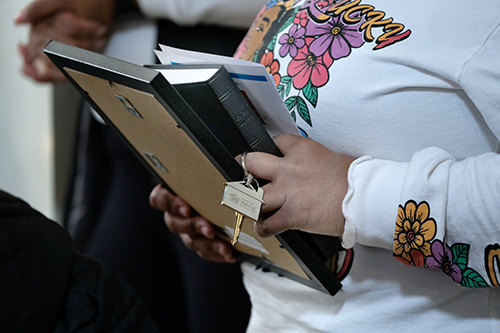

“I thank God for this because without him none of this would be possible in my life. I got to recognize that,” Savage said during her home dedication ceremony on Dec. 6. “I’m just so grateful for all of you for helping me make my dream come true of being a homeowner and for generational wealth for my family.
“I’m proud of myself that I actually did it. There were some days I was ready to throw in the towel,” she admitted as she as she continuously wiped away tears.
The home officially became hers just hours before the ceremony, when she signed paperwork to seal the deal with Habitat for Humanity’s Homeownership Program. The program, in partnership with Owens Corning for more than 20 years, provides a zero-interest mortgage loan to families in need of decent and affordable housing.
Through this partnership, Owens Corning has replaced more than
375 roofs in Lucas County and built 21 homes with MVHFH. Owens
Corning also helps provide shelter around the world through their support
of Habitat for Humanity International.


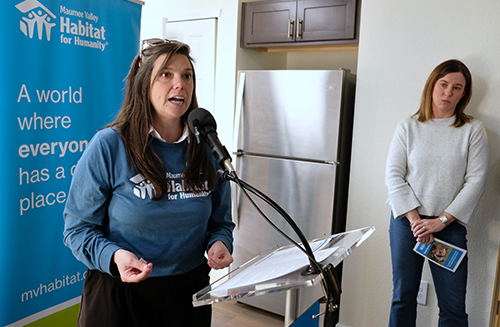

Erin McPartland kicked off the ceremony by saying she was excited to celebrate Savage’s homeownership journey with her. “Isn’t this a beautiful home? These are just beautiful homes we’re building, and for you Carla, it’s right in time for the holidays, so we’re so excited for this.”
McPartland, executive director of Maumee Valley Habitat for Humanity (MVHFH), noted that Savage’s build was special because it was the 21st build in partnership with Owens Corning. “Our mission states that we seek to put God’s love into action by bringing people together to build homes, communities and hope. Owens Corning exemplifies our mission.”
McPartland explained that every year Owens Corning partners with Habitat to help build and preserve homes in the community. She said the impact Owens Corning has on their mission is immeasurable – between the financial and in-kind contributions, and all the employee hours and volunteer engagement they give us. “Your impact can be felt across so many different families, so thank you Owens Corning for all you do. You are God’s love in action.
“And so, while this dedication is a time to love on our donors, Owens Corning and all of our volunteers and staff, it’s also a time to really love on Carla and talk about all the work you put into getting to this point, so, here to do that is Emily,” McPartland said before trading places behind the podium with Emily Buller, program director for MVHFH.
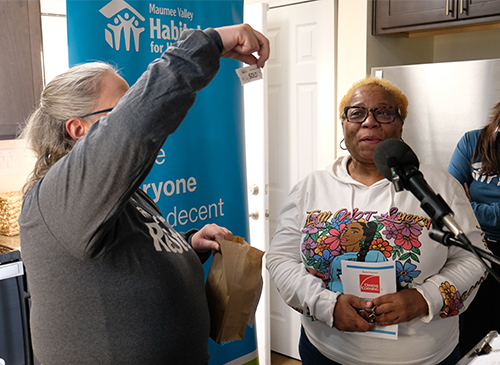

“Alright Carla, so you have been in the program for 26 months. You completed 301 sweat equity hours and attended 18 classes, which talked about home maintenance, financial wellness and lots of other topics about homeownership, so you did awesome,” Buller said to Savage.
“I know there have been times that have been hard during this program, but through it you never gave up,” she continued. “Life hasn’t always been easy for you, but you have a lot of faith, and you pray a lot, and that has gotten you through a ton. I know that home ownership has always been a goal for you, but now, with Samantha, you really wanted to provide that stability for her and a place where she could call home even when she is an adult; she can come home to this place, always.”
During the program Savage was presented with a Bible from her father, Harvey Savage, Jr., who blessed the space, and home-warming gifts from Needle Arts Guild and ReStore.
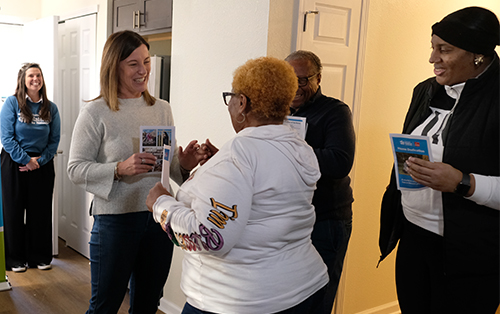

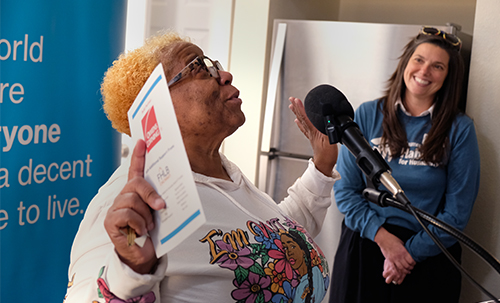

“Today’s the day to take a minute, take a deep breath, and celebrate that because you have done the work you have put in the time, and because of that we’re standing in your home,” said Lauren Clarke, strategic marketing leader with Owens Corning and a board member with Maumee Valley Habitat for Humanity.
With those words, Clarke handed Savage her new house key.
“I’m so just grateful it’s over … Jesus, now I gotta move and that’s gonna take about a week or two,” Savage said to laughter. “I’ll start tomorrow but I ain’t gonna be done tomorrow. I know it’s gonna take me at least a week, but I’m grateful and I thank God and I thank all of you. Thank you. Thank you.”
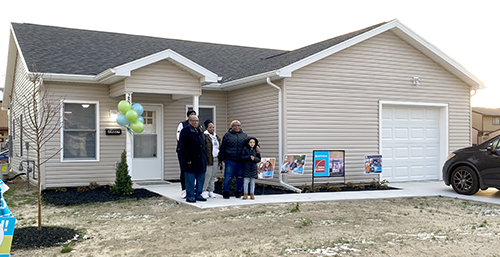

Help! Adulting is NOT working!
Be the change: Build society so adults thrive, survive
By Trinity Gonzalez | Toledo resident
Being a young adult in 2024 is truly challenging. Almost every young adult seems to be at a loss on how to manage in today’s society while being completely independent. We are constantly criticized by our elders about being “irresponsible,” with no words of wisdom or guide on how we can improve upon ourselves.
Although financial independence and personal stability are goals for many, the current economic and social landscape has made this transition increasingly difficult.
Young adults are also put down by their peers, as well as other adults, about the fact that more and more of us are still living at home. It has become some unspoken rule over the last few years that if you live at home in your 20s, you are “lazy” or “unmotivated,” when it is more common now than ever before.
Expenses have increased so much in the last few years. Being on your own and paying all your bills is a real struggle for most, not just young adults, but we are expected to be able to do it. We are told how lazy we are, but most of us are working 30+ hours a week while in school and managing to pay some bills.
This is why most of us choose to live at home; it is hard to juggle everything while still trying to build a career, all while learning how the adult world really works. Let’s not forget how overall expense prices keep climbing faster than our wages, making financial independence even harder to reach.
Additionally, inflation has impacted everyday expenses, from groceries to transportation, squeezing budgets and making even basic living costs challenging to manage. Most of us end up working in basic-wage, entry-level jobs, making saving for the future inevitably hard and not matching the rising costs of everyday goods. This usually makes young adults feel inferior and limits our ability to invest in our own long-term plans.
Beyond finances, student loan debt looms large. The cost of higher education has left many with significant debt, which hampers our financial mobility as we start out. Although repayment options exist, the weight of this debt affects choices like renting an apartment, buying a car, or starting a family.
Young adults today are willing and eager to contribute to society and build secure, independent lives, but the economic realities of 2024 make it exceedingly difficult.
Policymakers and communities need to recognize these unique challenges and work to create affordable housing, provide economic support, and consider debt relief measures to help young adults achieve financial independence.
We aren’t looking for handouts, just a fair chance to thrive. Let us all be the change and help create a society where young adults can thrive, not just survive.
The Humorists
Cartoonist Don Lee memorializes books at Monarch Comics
Cartoonist Don Lee penned this cartoon to memorialize the books and comics lost at Monarch Comics due to a fire that spread through Colonial Village strip mall, near the intersection of Heatherdowns Blvd. and Key St., in the early morning hours of Dec. 9.
The fire, which also damaged Shawn’s Irish Tavern and Sebastiano’s Italiano Restaurant, caused disruption, but the owner of Monarch Comics, who deemed the store a total loss, vows to return by the beginning of next year, according to their Facebook page.
Monarch Comics has been serving the Northwest Ohio area for over 30 years, providing the best selection of comic books and comic book related items combined with the best service in the area.
Carl Stone reinvents music


Pioneer of live computer compositions performs BGSU concert
BOWLING GREEN – When Carl Stone steps into the spotlight, dressed all in black with black-rimmed glasses and a black fedora, he appears to be a quiet, unassuming, cool jazz cat. You wouldn’t think of him as a disrupter, but beneath his stoic exterior, that’s exactly what he is.
Stone is a 71-year-old artist and composer who, since the 1970s, has been using digital samples and computers to create songs that defy words and musical definitions.
In concert Dec. 2 at Bowling Green State University, Stone’s only instruments were a small laptop computer and an iPad.
Staff and volunteers had to keep adding chairs as more and more people – a total of about 60 – ambled into the Dorothy Uber Bryan Gallery/Fine Arts Center, vying for vantage points around the partial walls of art displays and a large sculpture in the middle of the floor.
After being introduced by Kurt Doles, director of the MidAmerican Center for Contemporary Music, Stone picked up his iPad, acknowledged the boisterous applause with a nod and a smile but no words, and opened the concert with Kurihara, the first of eight electronic tunes he would spin over the next hour and 15 minutes.
The song floated into the air on gentle waves of rising, falling, climbing and sliding tectonic textures, propelled by steady but spare drumbeats and occasional clicks and crashes, all interwoven with sampled human voices that glided through the rhythmic mix.
Stone stood behind a black-draped table holding the iPad in both hands, touching or sliding a thumb across the screen to change up the mix of prerecorded sounds. He stared intently at the screen as he manipulated his sonic collages, at times bobbing his head, swaying his body to the rhythm, or leaning forward and backward into the musical mix.
Most of the songs presented that night, Stone said later in an interview with the Toledo Free Press, were so new they have not yet been titled.
The second song was startlingly loud and aggressive, a controlled cacophony of electronic samples that started with a snappy drum beat, then quickly plunged into undulating keyboard tones with robotic syntax.
Some of Stone’s compositions featured beats and harmonies built on earthy, world-music foundations, swirling with the funky rhythms and intricate vocal harmonies of Soweto and South African folk music.
Others soared into the stratosphere with baroque elements mixed with waves of sci-fi tones, somewhat like a group of holographic monks chanting in a jungle on Pandora.


One of Stone’s new songs began with a snappy jazz drumbeat that segued into layered orchestral samples washing across snippets of “dooby dooby doos” and other vocal slices from the crooner classic Strangers in the Night.
There were always multiple layers of action and tones, rhythm and beats, moods and emotions – sonic collages that could serve as the backdrop for Christopher Nolan’s next Inception.
Stone did not talk about or explain his music to the audience. The only spoken words during the concert were “Thank you” and “Thank you very much” as the audience clapped and cheered at the end of each tune.
In an interview after the concert, Stone said that the iPad is “just a controller” that he uses to adjust the sonic samples.
“I’m mixing, but it’s more than just mixing; it’s live processing,” he said. “So, I have samples that we recorded on the hard drive, and I play them back and manipulate them in real time.”
That combination of recorded samples and live mixes means every song is unique to the moment.
“The pieces at this point are kind of structured, and they are worked out in advance, but the note-by-note details can be different every time,” Stone said.
He noted that none of the vocals in his music are synthesized; they are all sampled.
Stone has won numerous awards for his compositions and has performed concerts around the world. A native of Los Angeles, he divides his time between L.A. and Tokyo.
One of the pioneers of electronic music, Stone said that when he started in the 1970s, he was using synthesizers and tape recorders to compose.
“The technology has evolved so much. Back when I started, you needed a studio that cost many hundreds of thousands of dollars in equipment. Now the power of that studio can be found in an iPad app for $25, probably.”


“I loved it,” Amberlin Leonard said after the show. “I’ve been listening to him for a couple of years now. His mixes are so diverse that it creates an interesting world.”
Leonard said she lives in Detroit and made the 90-mile drive to Bowling Green to see Stone live.
“I’m a fashion designer so I really, really like the diversity of his music. That’s how I create fashion, with mixes of different eras and different cultures, so I relate to his music a lot. Most of the time I tend to like his more ethereal mixes and pieces, because it’s lighter, but I’m still moved and inspired by it. But I enjoyed seeing the more loud and intense and chaotic pieces live. It’s probably the most awesome thing I’ve seen in a long time.”
She said that the way Stone used vocal samples on Strangers in the Night reminded her of the way the late DJ Screw sampled Phil Collins‘ vocals on “In the Air Tonight.”
Doles, who said he has been friends with Stone for about 30 years, last brought the composer to BGSU in 2014.
“I like to bring him around every decade or so just to stir things up. I think it’s very important that our students hear what he has to say. Because he uses just a laptop and he uses samples as his primary input, it makes him very unique.”
He added with a laugh that Stone’s compositions sound something like “pop music from Venus.”
More information on Carl Stone can be found online at rlsto.net.
UToledo hosts Finances 101
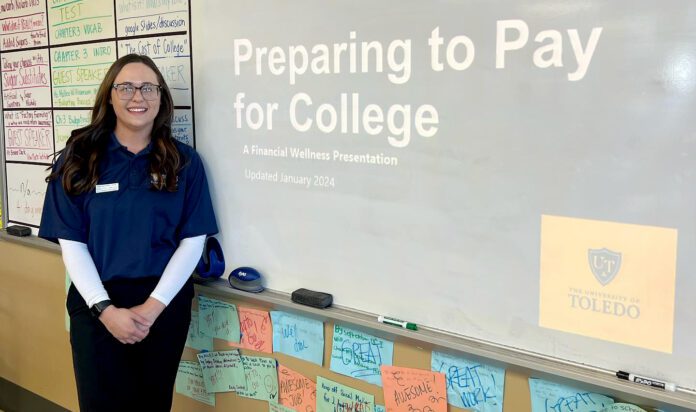

High school students learn fundamentals of finance
TOLEDO – It was all fun and games when UToledo’s Special Accounts and Financial Wellness Office recently partnered with the Northwest Ohio Credit Union Alliance for a serious lesson about finances.
Finances 101, an interactive simulation game of real-life situations, prepares high school students for financial literacy. Designed to teach the students about the financial demands of adulthood, it attracted more than 500 students from the local area. Northwest Ohio Credit Union Alliance plans to host similar local events in 2025.
Luke Grable, community outreach and education coordinator of Directions Credit Union, explained how the game works >
- The student is given a piece of paper that lists their jobs; if they have a spouse; if their spouse works; their taxes; and their student and credit card debts.
- From that point, the game simulates events, such as having children or enduring medical emergencies.
- Throughout the game, students make decisions about their finances while adding and subtracting from their allowance.
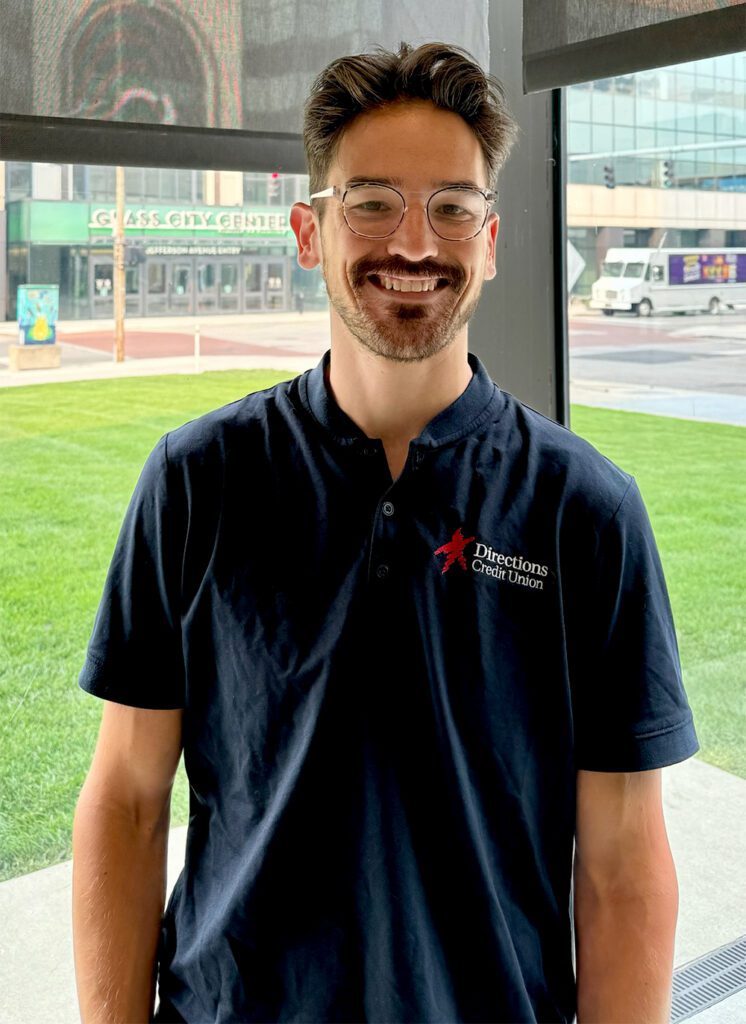

Grable said that in this game, “we’re giving you sort of the worst case scenario at times, and obviously not just take things too personally because this is all just a scenario. Some prosper, some don’t prosper, but ultimately the goal is to create a conversation and hopefully bring to light what opportunities exist for them as an adult.”
Mollee Williamson, financial wellness counselor at The University of Toledo, added what she felt the event offered the students.
“Finances 101 offered a fun way for students to understand the financial concepts and financial demands of the real world,” she said.
The partnership between the university and the Northwest Ohio Credit Union Alliance was forged when Williamson approached them last year about putting on the event. She attended the event at Bowling Green to observe, and she was interested in the work they were doing.
“I think it’s very important because it can be very taboo to talk about money,” said Grable. “People are holding on to those misconceptions about money from such a young age, and once they become an adult, they have to reorganize those ideas into what can actually work for them functionally as an adult.”
Finances 101 is presented several times each year throughout northwest Ohio. Grable explained it is done in a partnership with Sun Credit Union, with the next event being held at Bowling Green State University with a tentative date of March 11. The next one at Utoledo will likely be in October.
For any group in Toledo interested in learning about finances before next October, Williamson presents a variety of financial topics for high school or college courses, student organizations, local community organizations, or community events on behalf of the UToledo Financial Wellness department.
The most popular topic is Preparing to Pay for College. Willamson explained that this course goes over the expected cost, the key terminology in regards to the cost of attending, along with resources to reduce the amount that you’re paying out of pocket.
The second most popular presentation is the Budgeting Basics presentation. This course offers a similar activity to Finances 101 but on a smaller scale that is more intimate for local area high schools.
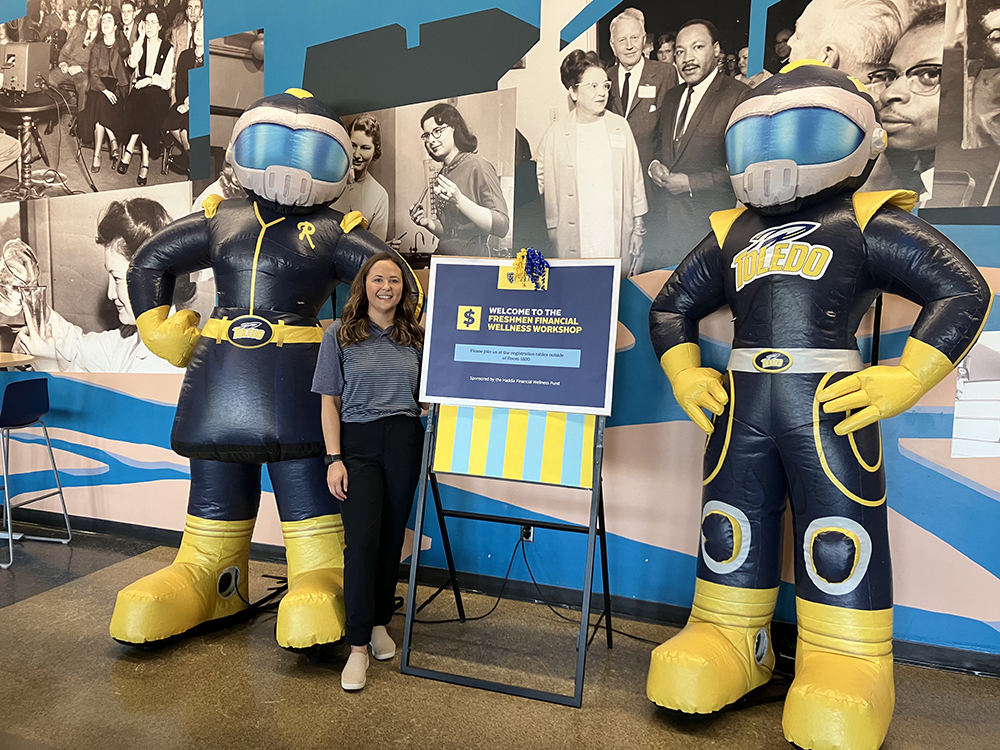

Other presentation topics include planning and money management, risk management, and custom presentations and workshops. Some presentations include a worksheet that allows them to take the information home and begin a conversation with a parent or guardian.
Williamson said her best financial advice for someone is that planning and money management are life skills, and “you’ll always need to continue to practice, work on it and improve. The sooner you start educating yourself and complementing the financial literacy education you receive, the better off you’ll be to kind of navigate the things life throws your way.“
Schools or groups can sign up for presentations on the University of Toledo website.
Coach Dempsey & his Fighting Irish
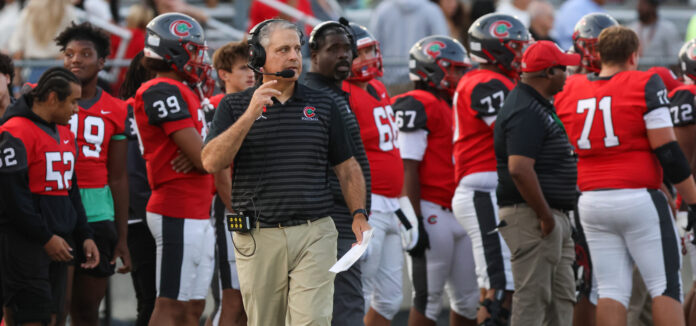

Longtime coach turns football team into juggernaut
By Mark Griffin | Photos by Scott Grau
TOLEDO – Rewind the time machine back to the year 2000, during Greg Dempsey’s first season as the head football coach at Central Catholic High School.


The Irish were coming off a disappointing 3-7 season and Dempsey, then just 28 years old and a 1990 CCHS grad, was tasked with turning things around.
“My first win was at Maumee in week two. I want to say it was 20-13,” recalled Dempsey, who was the defensive coordinator at Start High School the previous five years. “We went 8-3 and missed the playoffs by one spot. We beat St. John’s in the Hall of Fame Game for the first time in 11 years.
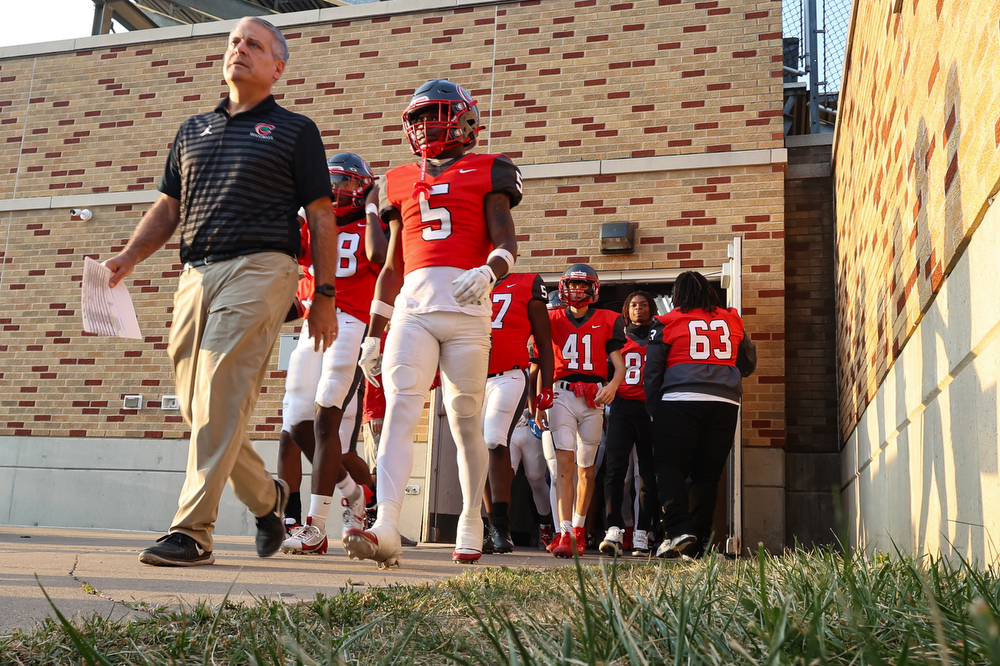

“We were not necessarily predicted to do that well. It was mostly the kids believing in themselves and believing and trusting in the coaches.”
Just five seasons later, in 2005, the Irish were state champions, slipping past Canfield 31-29 to win the Division II title in Massillon.
Dempsey said winning that first title was both a blessing and a curse.
“We just had a daughter that November, so I was pretty much exhausted,” he said. “It was a blessing during that whole period, but it was a curse over the next three years, when we lost in the first round of the playoffs. People were not happy with that.
“It was a blessing but it came at a cost. No longer was it good enough to just make the playoffs to make people happy,” he said.
Dempsey, who played baseball and football for the Irish, said his initial goal as head coach was to make the football program relevant again.


“To me, it was always about getting back here and trying to turn this program into something special,” said Dempsey, who also serves as the school’s athletic director. “This school was special to me and what it provided me. I wanted it to be the football program in northwest Ohio.”
Central Catholic (14-2) has become a juggernaut, capturing state titles in 2012, 2014, 2022 and 2023. The Irish were state runners-up in 2015 and lost in the state semifinals in 2016, 2017 and 2019.


On Thursday, the school held a pep rally for the two-time defending champs, who were facing a familiar foe the next day – undefeated Columbus Bishop Watterson Eagles – in the D-III state championship game at Tom Benson Hall of Fame Stadium in Canton. Last year, Central Catholic defeated Bishop Watterson, 27-7 in the state’s title game.
But this year, the Eagles got their revenge and scored a heartbreaking game-winning touchdown with 1:29 left in the fourth quarter for a 19-14 win over the Irish, securing a perfect 16-0 record for their season.
Dempsey, who had a 266-54 career record entering Friday’s game, said the credit for the program’s overall success “all goes to the players.” He said this year’s team has consistently shown its toughness.
We have tough seniors who work hard and play together. I really enjoy how they are a team. Toughness is a key quality of any team.
Head Coach Greg Dempsey
Dom Spinazze, a senior tight end/defensive end and one of three team captains, started one game as a sophomore and has started every game the past two years.
“I was fortunate to see a senior class full of so many leaders determined to keep the tradition alive,” Spinazze said, adding that the players are well aware it is their job to uphold the tradition.




“I wouldn’t say it’s pressure,” he said. “It’s more the standard that we know. Our senior class has been very fortunate to win two state titles. I’ve been watching the seniors do it since my sophomore year. We know how we have to act and get it done.”
Asked what he has enjoyed the most about playing for coach Dempsey, Spinazze replied, “everything.”
“He is an amazing coach,” Spinazze said. “He’s not afraid to get on you if you mess up, but he’s going to be right there to pick you up and make sure you learn from your mistakes. He’s a great role model, not just for football but in life.”
Central competes in the six-team Central Division of the Catholic High School League and won the division title in 2023. One of Dempsey’s former players, Michael Warren, won the state’s top individual award, Ohio’s Mr. Football, in 2016 before going on to play at the University of Cincinnati.
“I’m proud of these kids and grateful for them and the coaching staff we have here,” Dempsey said. “I’m grateful to Central Catholic High School. It’s been very important to me. There have been so many big wins, and I appreciate every win. Nobody realizes how hard it is to win.”




‘MAGAjuana’ a bipartisan achievement
2018 Farm Bill bridges divides, low-dose cannabis success


The 2018 Farm Bill, signed into law by former President Donald Trump, was a groundbreaking bipartisan achievement that legalized hemp – cannabis sativa plants with less than 0.3 percent THC – and de-scheduled low-dose THC from the Controlled Substances Act.
This legislation not only paved the way for a thriving national market for low-dose cannabis products, but also, as I jokingly call it, legalized “MAGAjuana.” The term reflects the transformative power of low-dose cannabis legalization under Trump’s leadership, a move that has energized local economies, empowered farmers, and brought cannabis into mainstream consumer markets.
However, recent legislative efforts in Ohio, such as Senate Bill 326, introduced by Sen. Steve Huffman, risk undermining the progress made by this historic law and jeopardizes the success of MAGAjuana. Lawmakers must focus on regulating the industry, not detonating it with overly restrictive policies.
The 2018 Farm Bill created a framework for low-dose cannabis products that appeal to consumers seeking therapeutic benefits without significant intoxication. This innovation has sparked economic growth and demonstrated the potential of rational cannabis regulation:
Economic growth: States like Minnesota have capitalized on the opportunity, establishing a regulated market for low-dose THC beverages capped at 5 milligrams per serving. This approach has generated $200 million in revenue in just two years while maintaining consumer safety.
Consumer benefits: Low-dose cannabis products, such as beverages and edibles, provide mild therapeutic effects, including anti-inflammatory relief, without the intensity of high-THC cannabis.
Hospitality industry boost: Minnesota’s model has integrated hemp-derived THC products into restaurants, taprooms and bars, allowing low-dose cannabis to be served alongside alcohol. This has created new revenue streams for the hospitality industry, benefiting local businesses statewide.
Bipartisan achievement: The 2018 Farm Bill, or the dawn of MAGAjuana, united red and blue states, proving that cannabis policy can transcend political divides to create economic opportunities for farmers, entrepreneurs and communities.
Despite the success of MAGAjuana, Ohio Senate Bill 326 proposes to severely restrict the low-dose THC market by banning products containing more than 0.5 milligrams of delta-9 THC per serving, or 2 milligrams per package.
This limit is far more restrictive than Minnesota’s 5-milligram cap and threatens the success of Ohio’s hemp-derived cannabis market:
Stifling progress: By capping THC at 2 milligrams per package, SB 326 would drastically reduce the appeal of low-dose cannabis products, potentially driving consumers and businesses to neighboring states, like Minnesota.
Contradicting MAGAjuana’s legacy: The bill directly undermines Trump’s intent with the 2018 Farm Bill to legalize and support a robust low-dose cannabis industry.
Economic consequences: Instead of fostering growth, the bill risks transferring the success of MAGAjuana to more progressive states, leaving Ohio behind in the cannabis economy.
The success of MAGAjuana demonstrates that thoughtful regulation can foster innovation and economic growth. Ohio lawmakers should adopt the mantra “Regulate, don’t detonate” to ensure the state’s hemp industry thrives. Overregulation, like the limits proposed in SB 326, risks blowing up the progress made under the 2018 Farm Bill and undermining a key piece of Trump’s legacy.
By adopting reasonable THC caps and clear safety standards, Ohio can follow Minnesota’s lead and create a balanced, sustainable low-dose cannabis market that benefits consumers, businesses and communities alike.
Learning from Minnesota’s model
Minnesota has embraced the principles of MAGAjuana, proving that rational regulation can address public health concerns while fostering economic growth:
Balanced THC caps: A 5-milligram THC limit has ensured that Minnesota’s low-dose products remain safe, consumer-friendly, and economically viable.
Hospitality integration: Low-dose cannabis beverages have become a staple in Minnesota’s restaurants, breweries and bars, significantly boosting the hospitality industry.
Public safety and trust: Clear labeling, rigorous testing, and robust regulatory oversight have made Minnesota a model for other states, including Ohio.
The actions of Ohio Republicans under SB 326 raise a critical question: Will they honor Trump’s legacy of MAGAjuana by fostering the success of the low-dose cannabis industry, or will they stifle progress and transfer this economic opportunity to states like Minnesota?
Trump’s 2018 Farm Bill was a historic bipartisan achievement that set the stage for a thriving national cannabis market. Now, it’s up to Ohio lawmakers to decide whether they will build on that success or detonate it with overly restrictive measures.
MAGAjuana is a shining example of what can be achieved when bipartisan collaboration prioritizes innovation and economic growth. By fostering this industry, states like Minnesota have demonstrated how low-dose THC markets can benefit consumers, businesses and entire industries, such as hospitality.
Ohio lawmakers should embrace the principles of MAGAjuana by adopting reasonable THC caps and thoughtful regulation. If Ohio imposes unnecessarily restrictive limits, like those in SB 326, it risks losing out on the economic and cultural benefits of low-dose cannabis, effectively transferring the success of MAGAjuana to other, more forward-thinking states.
MAGAjuana is more than just a clever term – it’s a testament to the transformative potential of bipartisan policymaking, economic opportunity and consumer innovation.








